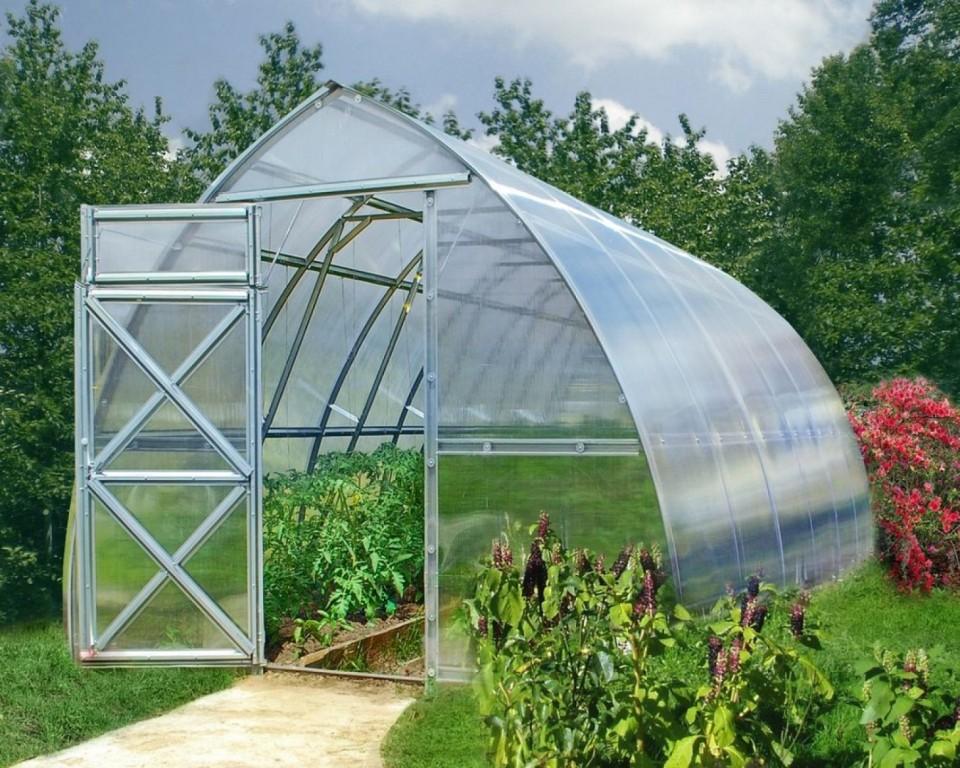
If a person has a private home and loves to plant vegetables and herbs, he has probably at least once thought about buying a greenhouse. Such a structure is a lifesaver when the climate is not suitable, or you want to please your relatives at the beginning of summer. In addition, there are greenhouses, thanks to which you can get a harvest all year round.
It becomes clear that this is a useful acquisition. But undoubtedly expensive. It’s much easier to study this article, watch a video on YouTube, and put in the effort to build a greenhouse with your own hands.
Where to begin?
It's worth understanding the theory. Disassemble the different types of greenhouses, so that you can then choose one of them and plan its creation. But there is a large selection of structures that differ in shape, complexity of construction and cost. Let's move on to this point.
The most commonly used materials are those that have green or yellow colors. Sometimes they can be completely transparent. These are the most suitable shades. They promote rapid plant growth.
POLYCARBONATE. One of the most popular materials. Its advantages are:
The best technical characteristics.
Suitable performance characteristics.
Strength of the material. If we compare it with the same polyethylene, it becomes clear that the first option tolerates physical impact much better. Loads are not so scary for him. For example, in winter. During this period, low temperatures and snow can destroy the material. Make it crack. For polycarbonate this is not a problem.
It is worth noting that this material is almost not confirmed by ultraviolet radiation. This has a beneficial effect on the plant, because they will not be exposed to ultraviolet rays.
Has high thermal insulation. All thanks to the design of the material itself. It consists of two layers at once.
As mentioned in the third paragraph, polycarbonate is able to withstand various temperatures: both severe frosts and hot days.
This material can scatter light. What's the advantage? The fact is that your harvest will not be damaged by the sun. The likelihood of the plant burning is reduced.
Material price. One of the most decisive factors. If you use polycarbonate, then such a greenhouse will turn out much cheaper.
In addition, there are a huge number of companies that provide high quality polycarbonate. Also at a good price. Availability of material is convenience for the buyer.
POLYETHYLENE FILM. How to use it? It is enough to apply it to a frame made of absolutely any suitable material.
The film is lightweight, which leads to heat generation.
There is a type of film that will last much longer. This is reinforced film.
This material is easy to attach to the frame. Consequently, creating a greenhouse will require much less effort and time. Any master can handle this kind of work. Even a beginner.
Low cost.
Minuses:
Even if you use reinforced film, the service life of this material will be minimal.
It does not protect plants from ultraviolet rays.
The film is not sufficiently resistant to temperature changes.
Sound insulation is not the most critical point. But you can't miss it. It is worth noting that heat from this material will not be protected from noise. The film will rustle even from a gentle wind.
So, we have looked at the materials that are most often used to build greenhouses. If you look at the pros and cons, it becomes clear why polycarbonate is in the lead. We personally recommend choosing this one.
If you don’t want to use film, you can replace it with agrofibre.
What are the advantages of this greenhouse?
Easy to assemble.
NO foundation required. This makes the job easier.
Low cost.
Thanks to the mesh, you can make a greenhouse of different sizes.
The design is convenient for gartering the crop.
What will be needed for production?
Wooden beams (You can also use steel pipes or angles), Wire, Mesh, Film, Rope, Adhesive tape, Tools.
We take the beams and hammer them in at a distance of up to 1.4 m.
We make the base (arch) from several pieces of mesh, which need to be secured to the supporting posts (previous point) using wire. You can use a screed.
In order to strengthen the resulting structure, it is worth erecting supports from wooden blocks. You need to take them (size 50 by 50 mm) and drive them into the ground.
We make a dome out of mesh. We attach the film to it using a rope.
We also make the walls from film. And we attach them to the dome with tape.
Cut small holes in the side walls. It is better to place them on top. This creates ventilation for the greenhouse.
The last point is the door. It can also be made of film and secured with a magnet.